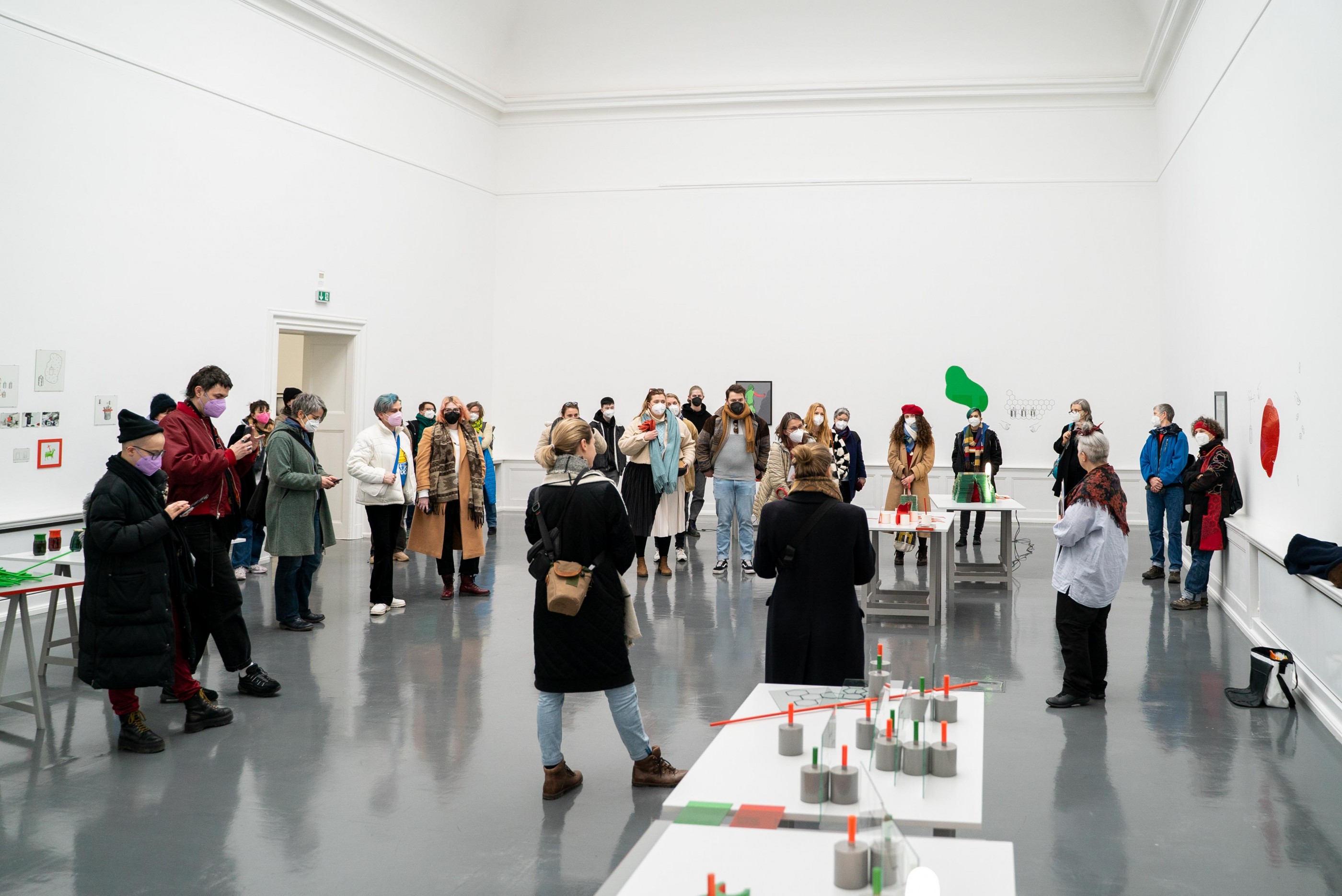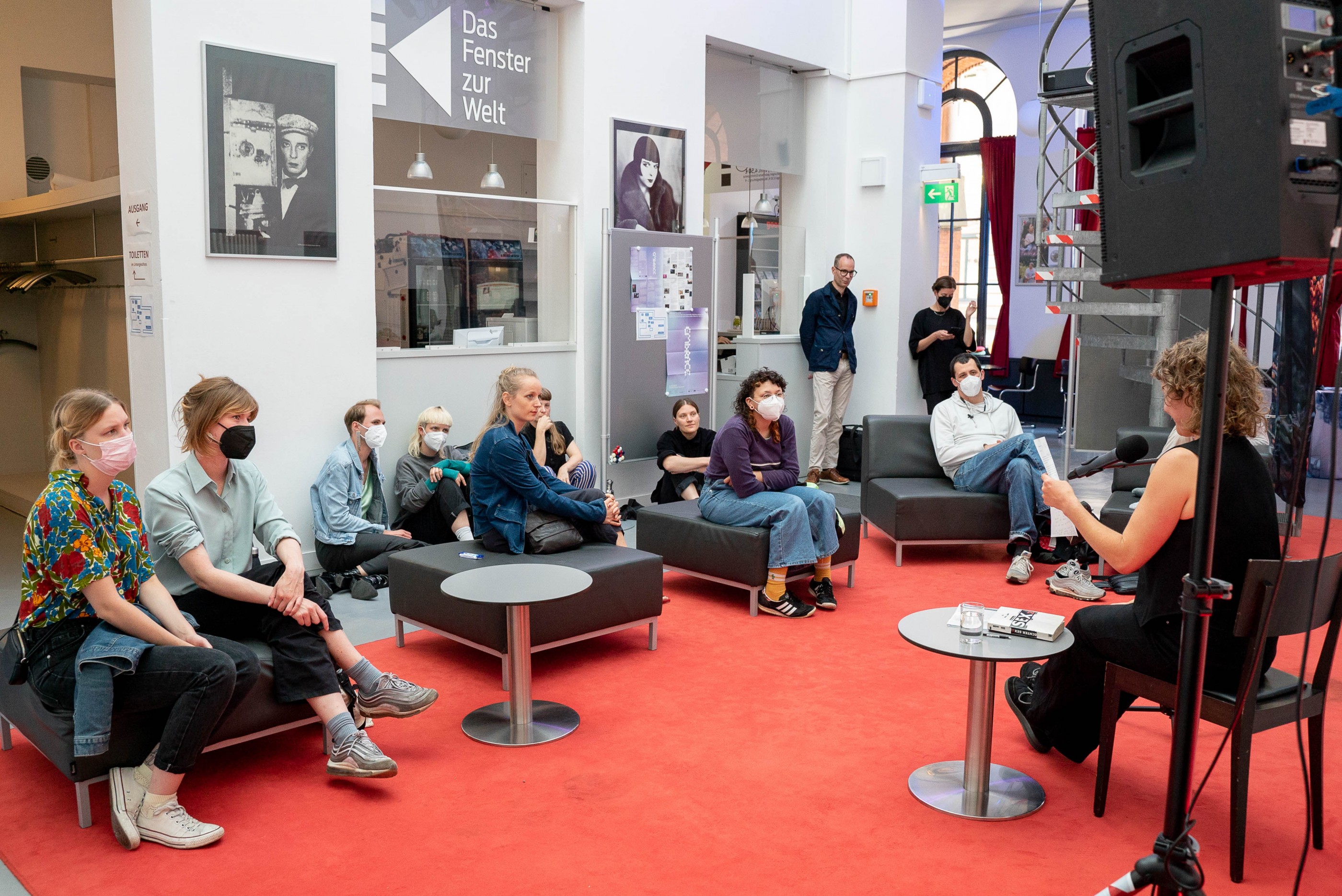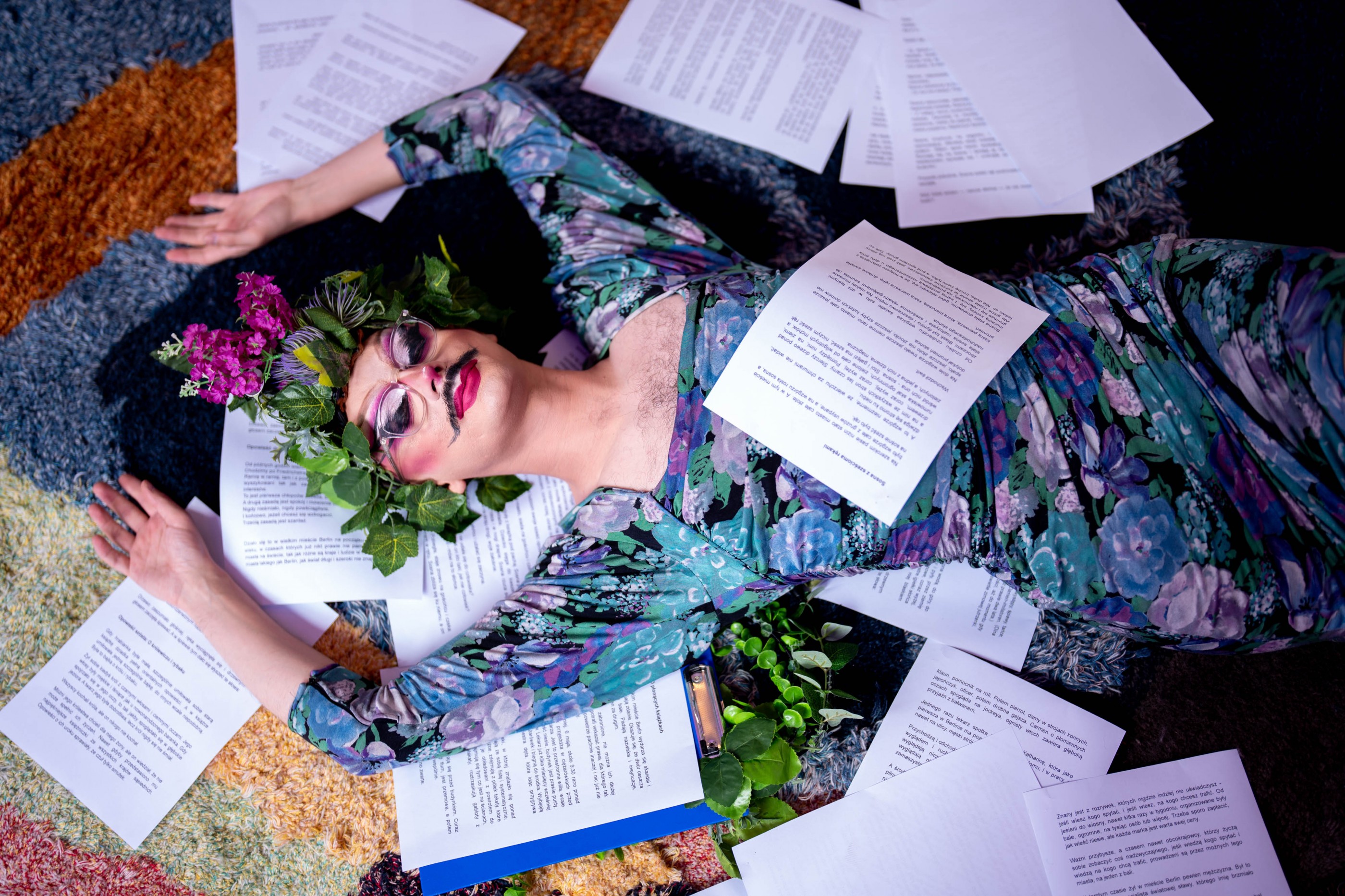CE: When you look back, did you feel that a platform that explicitly exhibits queer was lacking?
KS: Yes, I did feel such a platform was lacking on an institutional level , although not at the grassroots levels. The last three years we have observed a lack of institutional support for minorities in Poland, especially from public institutions. It leads to a shortage of funds to practice one’s art and survive. In other words, the state is trying to get rid of queer artists. In response, various independent initiatives are developing. EMBRACE became one of them. However, the success of these initiatives depends on the determination of the artists, curators, or art producers themselves. In Poland, many of the structures that have dominated the institutions so far will have to be reassessed. We should rethink which formats still have the power to convey a message. Clearing up the Polish art scene of queer artists and banning them from an “official” discourse is a real threat to society, which only deepens divisions. It is up to all of us to decide what model of community we want to maintain and continue.
KM: What I have been missing is a platform that has a direction/framework but can react flexibly to current issues. A platform that can support our individual but also collective practices and collaborations. However, EMBRACE does not explicitly exhibit queer artists—it is not only about queer art, but also about women’s rights, gender equality, and normalizing gender diversity. Basically, it’s about basic democratic values. That’s why it’s been so important for us to create a platform that can act and react flexibly. The political implications of the EMBRACE PLATFORM encourage collaboration, care, anti-colonial, and anti-xenophobic approaches to work.
CE: The idea of our current issue political bodies also implies that not every body, every entity is granted equal possibilities and rights, let alone a universalism. Do you sometimes feel that as queer artists you have to produce specifically queer work? Or do you tend to work against labeling?
KS: In my view, queer artists don’t have to produce queer work. I don’t describe myself as a queer artist either. It is about the “gaze” who looks at what and how. A work could be produced about stones, but still it is made by a person with a queer gaze. I believe that the metric is reflected in the work and other parameters are accompanying the process. It is a choice to label oneself or not, it is a question of visibility and identity politics, how radical or open we would like to act.
KM: What kind of society do I want to advocate for? How can I incorporate a feminist and/or queer approach into my work whilst supporting the work of others? EMBRACE is fluid enough to open the door to other bordering topics while maintaining its own base. The queer term that I am more interested in, and that I see as the basis for EMBRACE, is not positioned exclusively on issues around LGBTQIA+. I see it as an understanding that relates to intersecting identities and social power structures such as race, religion, class, etc. And how each of these impact social oppression and privilege. I was told very casually in a press interview last year, and kind of put in a corner, that I was advocating for “women’s issues”—whatever exactly is meant by that. So, I was already labeled.
CE: The founding of a platform also opens up the possibility of defining the working conditions and the setting in which art, discourse, and networking takes place. To grasp the bigger picture: how do you want to work? What is important to you?
KS: EMBRACE PLATFORM for me means creating longer-term structures surrounding how we want to work, who we want to work with, what we want to build. How do we communicate and how can things work? We’re reinventing this over and over again. It starts in the moment we receive funding, then the work of the participants can be rewarded. The context of the institution is extremely important because it creates visibility, and gives us access to a discourse. There is then also the backdrop for the art, which becomes a physical place to meet and to find and host the audience.
KM: Yes, we can influence certain parameters of our working environment and that’s what we’ve geared EMBRACE towards: exhibition fees, good communication, and clearly setting capacity limits, and the best working environment that we can offer within our limitations—these are all important points. Also, it is central that our guests feel comfortable and so we try to create safe spaces where necessary. It is also about understanding art and cultural institutions as spaces for political and social action and to give visibility to specific discourses and themes. We are definitely still in the development phase, and we are incredibly grateful that we had the opportunity, for example at the Badischer Kunstverein, to simply do it, to test and to make. Anja Casser (Director of Badischer Kunstverein) has given us a lot of trust, for which we are thankful.
CE: I have to tie the institutional theme to this: how important is the framework of a professional art business to you? Do you think that something is lost on a political level or is something gained, when you work in a within those structures? It is, I guess, the age-old question on the relationship between politics and art . . .
KS: In my view, politics is an amplifier for us at the moment and has also motivated us to act and take a stand. EMBRACE was founded in order to intervene within the professional art business. In Germany, it is easier to cooperate, and we are then even welcome in institutions. In Poland it is a completely different situation. For our next EMBRACE event we gained a partner institution in Poznan, where we want to organize events next year. This institution works like the backstage of a national institution. It is a state linkage and in this setting, we wish to intervene in Poznan.
KM: In any case, there is also the question of how institutions can be involved to make political works visible. Either by cooperation or peaceful occupation. I’m also still wondering about the boundaries and trajectories of activism. There is so much art that is already activist out there, that is clearly anchored in the institutional art context. And it works.
CE: A question to conclude, transferring from the art world to the teaching world, from one institution to another: As current and former teachers at the Staatliche Hochschule für Gestaltung, Karlsruhe (HfG), you’ve gained insights into the various facets of an educational path. What (political) framework conditions would you like to see implemented in the university context?
KS: I think mandatory training in the areas of anti-discrimination, and LGBTQIA+ awareness for all employees at the university would be desirable. They can start in very low-threshold formats, but that’s how an understanding of these issues can be reinforced.
KM: Yes, I agree and a conscious approach to power structures and issues of intersectionality! It also leads to the topic of equity vs. equality, and how all students can be supported well, as different financial realities exist. How can the capitalist pressure, which is definitely there, be connected with artistic freedom and critical questioning. I think this will remain an inexhaustible topic, which might be intensified by the current inflation, energy crisis, price explosions, etc. I am currently reading about “Queering Pedagogies,” this could also be great as a project seminar.
CE: Dear Kerstin, dear Karo, thank you for your time and this conversation and I am looking forward to your upcoming projects!
Embrace website is coming soon, stay tuned:
https://www.instagram.com/embrace_platform/?hl=it
https://www.cityofmediaarts.de/de/events/embrace/





